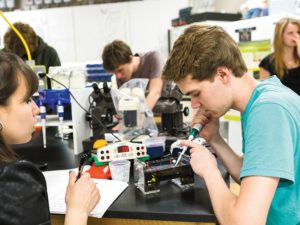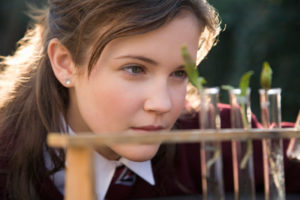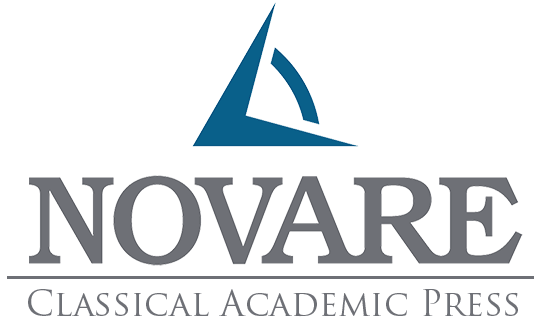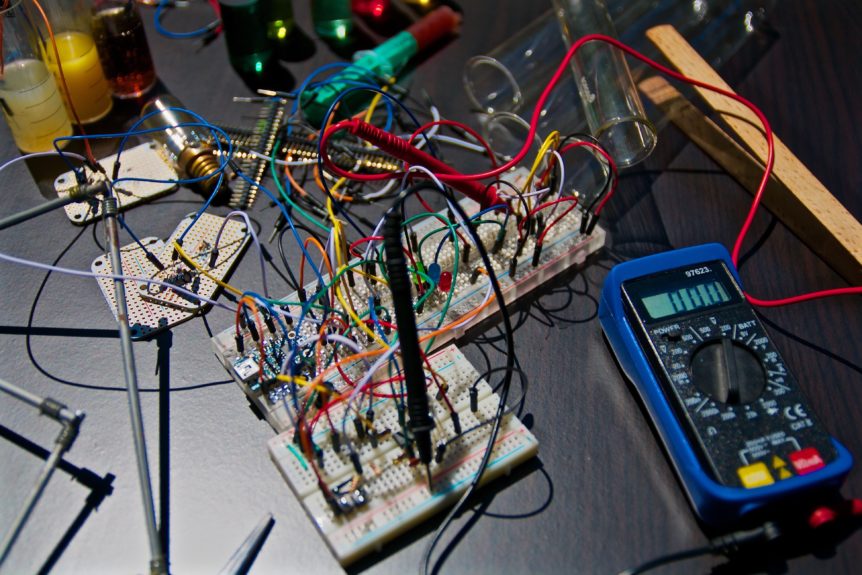Lab Experiments and the Goals of Science Education
by John D. Mays
Most science educators agree that labs are an essential part of any science course. However, the goals of the laboratory work differ significantly between the different scientific disciplines.

For courses in life science, earth science, and general biology, the goals of the laboratory component are most often descriptive, that is, mainly about looking and describing. In descriptive experiments, students primarily tabulate and describe their observations.
Although some experiments in the physical sciences (physics, chemistry, and physical science) may be descriptive, many—or even most—are not. In this post, I explain why this is the case. As a specific example, I use our text Novare Physical Science (Novare Science & Math). The same ideas apply to our two collections of chemistry experiments, Chemistry Experiments for High School and Chemistry Experiments for High School at Home.
Demonstrations vs. Experiments
Of the 12 experiments included in Novare Physical Science, some are relatively simple; others involve a rather complex setup with a lengthy list of materials. Thus, it is not surprising when people wonder why some experiments are so complicated. Can’t we simplify everything to make the experiments easier to perform and more accessible? We have all heard of simple “kitchen chemistry” science activities. Can’t we have a set of simple “garage physics” experiments that don’t require so many special parts?
In the physical sciences, most experiments must be quantitative to be effective.
At issue is the distinction between demonstrations and true experiments. Simple demonstrations are easy to come by and often easy to perform. The internet is full of them. But in the physical sciences, most experiments must be quantitative to be effective. This means that students must gather numerical data from measurements, analyze it, and interpret it to see what it says. This is because the laws of physics and chemistry, which are our models of nature, are mathematical.
At the elementary-school level, students often explore physics and chemistry with simple demonstrations. But beginning in middle school, the goal is increasingly to enable students to experience what real experiments are like. And that involves collecting data, analyzing it, and often tabulating and graphing it so that mathematical patterns in the data become apparent.

Experiment on electrostatic forces
This is the reason behind the complexity of some of the experiments included in Novare Physical Science. Some experiments, such as experiment 3 on electrostatic forces, are very simple and entail minimal cost. But experiment 3 does not include taking data and is actually more of a demonstration than an experiment. The experiments involving data collection are more complex.
To illustrate further, we can demonstrate the effect of friction by rubbing two wooden blocks together and feeling the heat as they warm up. But an experiment that seeks to measure the amount of energy involved would be quite complicated. We would have to take into account the amount of force used when the blocks were pressed together, the length and timing of the stokes, and the temperature rise. We would find that measuring any of these variables would be challenging; measuring all of them in a way accessible to middle-school students is even more challenging. (And we do not include such an experiment in Novare Physical Science.)
It is important for teachers and home-school instructors to understand this issue. We must appreciate the fact that proper science instruction needs to incorporate quantitative experimentation as soon as students’ mathematical backgrounds are ready for it. This means beginning in middle school. Simple demonstrations are great and should be part of students’ daily classroom experience. Such demonstrations are an essential part of instruction that helps students comprehend scientific principles.
But understanding general principles is far from the quantitative nature of modern-day physics and chemistry. Introducing students to this means taking data. This necessarily involves complexity because experiments must be designed so that measurements of the values of all relevant variables may be accurately made.
Engaging Young Brains
We had two goals in mind while developing the experiments in Novare Physical Science. First, we sought to give students a real quantitative laboratory experience. But in order to make the overall laboratory workload manageable, we did make use of non-quantitative demonstrations as well as quantitative experiments. Experiments 3, 4, and 9 involve only observation and do not entail taking measurements.
Second, we use the experiments to get students’ mathematical brains engaged. Exercises requiring the use of pre-algebra mathematics do not begin until the spring semester (Chapter 8). But the very first experiment—which appears after Chapter 2—involves collecting and graphing data. This is quite intentional—even though we are well aware that students in 7th grade may have had little experience with graphing.
We cannot treat the education of our children like a factory floor where efficiency and productivity are primary values
To present these ideas clearly to students and teachers, we included the “Getting Started with Experiments” section in the text. That section includes a detailed tutorial on how to make a scientific graph. Additional information for the teachers is included in the Experiment Resource Manual on the Resource CD. The goal for all of us is not simply “covering material.” We strive to draw students upward into the adult world of science.
Enjoying the Work

In view of the importance of a quantitative laboratory experience, we encourage teachers and homeschool tutors to include as many of the experiments as possible in the course, preferably all of them. Without question, this takes a lot of planning and preparation. We encourage you to engage in the preparation with patience and joy.
Think of the laboratory practicum as providing the same sort of hands-on engagement as that students receive on the playing field or in an orchestra. Both involve many hours of preparation, training, and practice. Laboratory work in science is like this. Avoiding it because it takes too much time is like a baseball team in which players are taught the rules of the game, but have short, superficial practices because more in-depth practices take too much time. But we all know that for a baseball team to accomplish its purpose, the solid practice time is not optional. The same logic applies to science.
Contemporary culture has us all running around like crazy with thousands of things to do every week. But we cannot treat the education of our children like a factory floor where efficiency and productivity are primary values. One of the key things about teaching science is just this: it takes time and effort to do it well. We must slow down, plan our work thoroughly, prepare the apparatus carefully, take the data carefully, and spend time analyzing it and reporting on it. (This is how science itself works, not just science education.)
Relax and enjoy it. If we do this with patience, the experience our students enjoy will be engaging and meaningful. Additionally, the experience of working with them to conduct the experiments will be most rewarding, as it always is when teachers or coaches journey with students down a challenging road.
Photo credit:
Nicolas Thomas

